In October 1999, in the dry desert of Indio, California, a music festival was born. Little did the creators know that a combination of social media apps, influencers, artists, celebrities and musicians would turn a dirt-filled weekend into one of the most popular, coveted and artistic experiences in the country. Twenty-three years later Coachella Music and Arts Festival’s musical acts are the best of the best, but so too is its arts program of large-scale sculptures. This year, 11 artists were commissioned to bring their awe-inspiring work to the party, each provoking a sense of community amongst a sea of strangers.

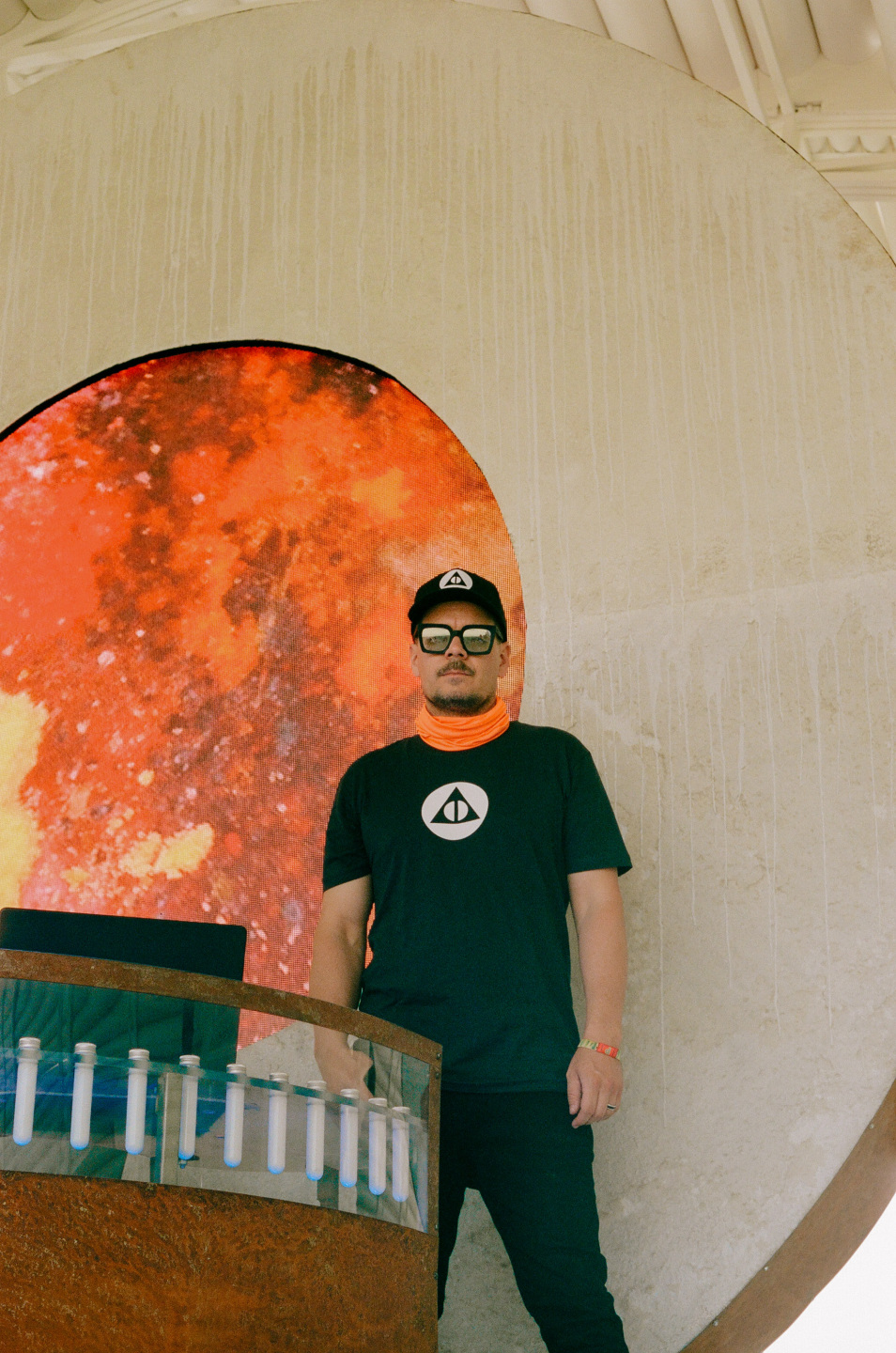
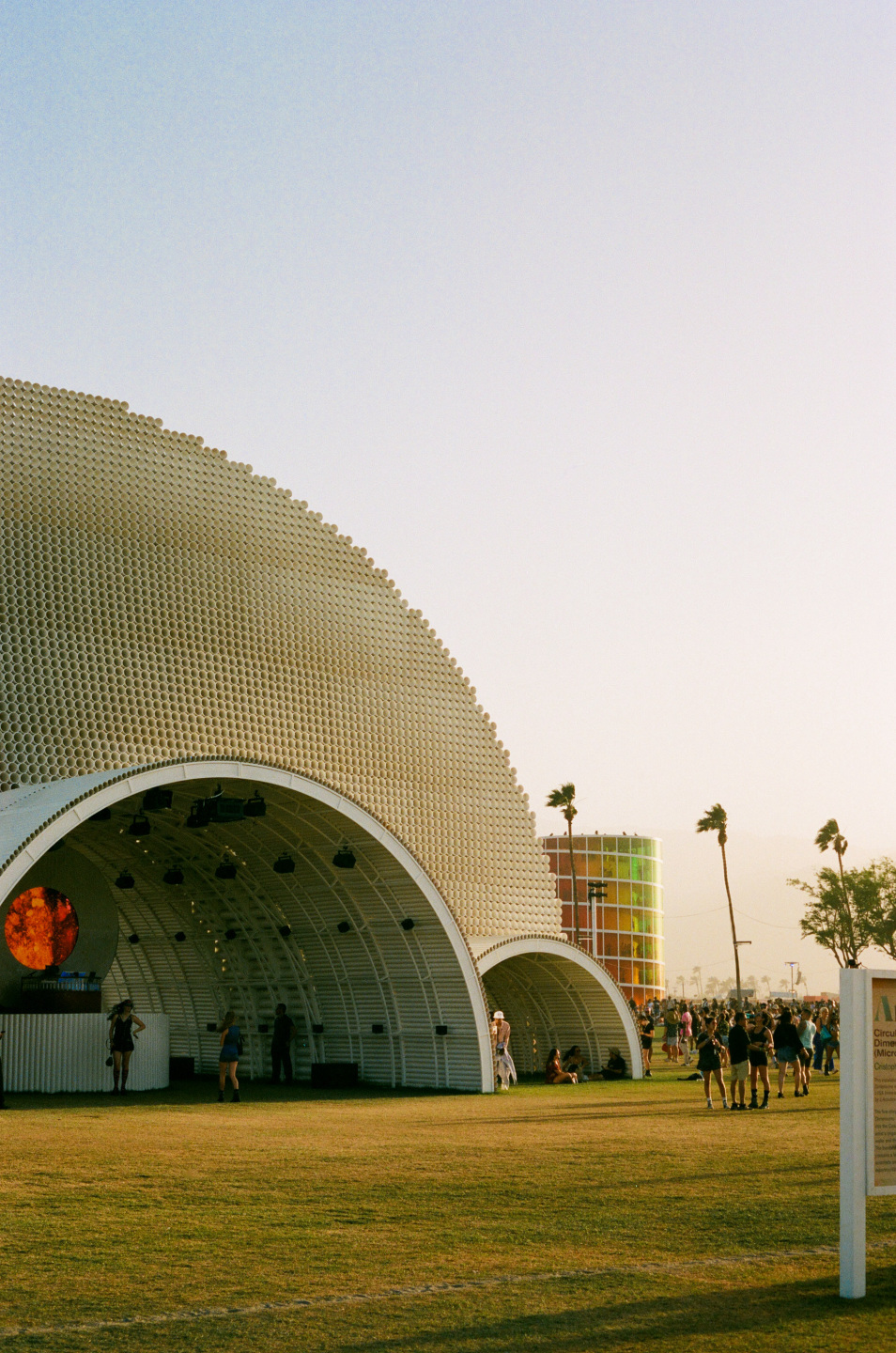
Circular Dimensions x Microscape by Cristopher Cichocki
The five-story-tall Circular Dimensions (Microscape), constructed with more than 25,000 feet of PVC tubes, presents a visual spectacle resembling a futuristic moonscape. The artist’s ongoing exploration of water and the history of the desert influenced his piece so that the interior pavilion contains a communal lab where scientists and artists generate experimental “video paintings” by manipulating water, salt, barnacles and algae from the Salton Sea under microscopes and projecting the activity in real time inside the pavilion’s “nucleus.” When the sun sets, the magnitude of the stage amps up with the artist’s ever-evolving visual performance.
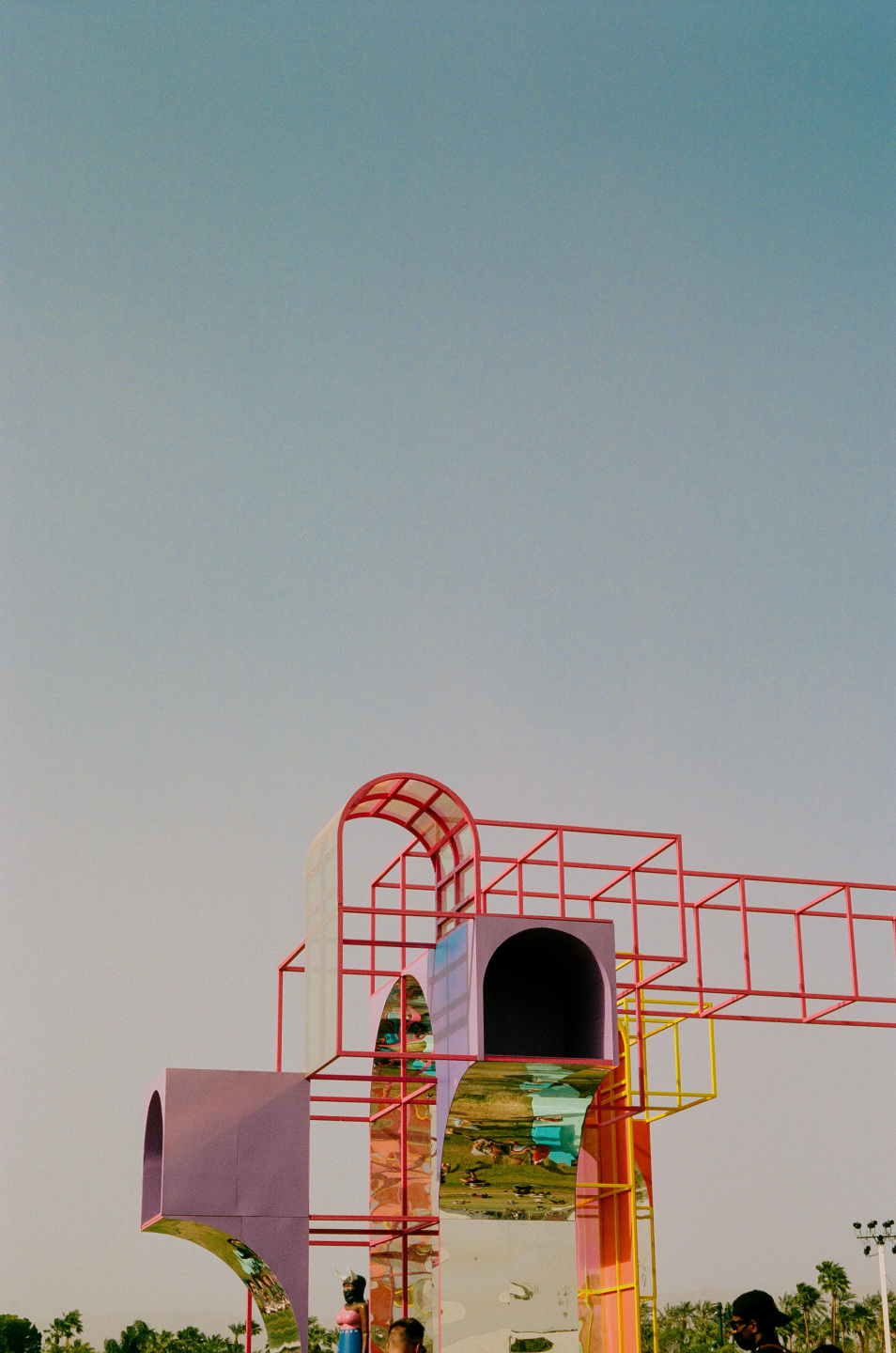

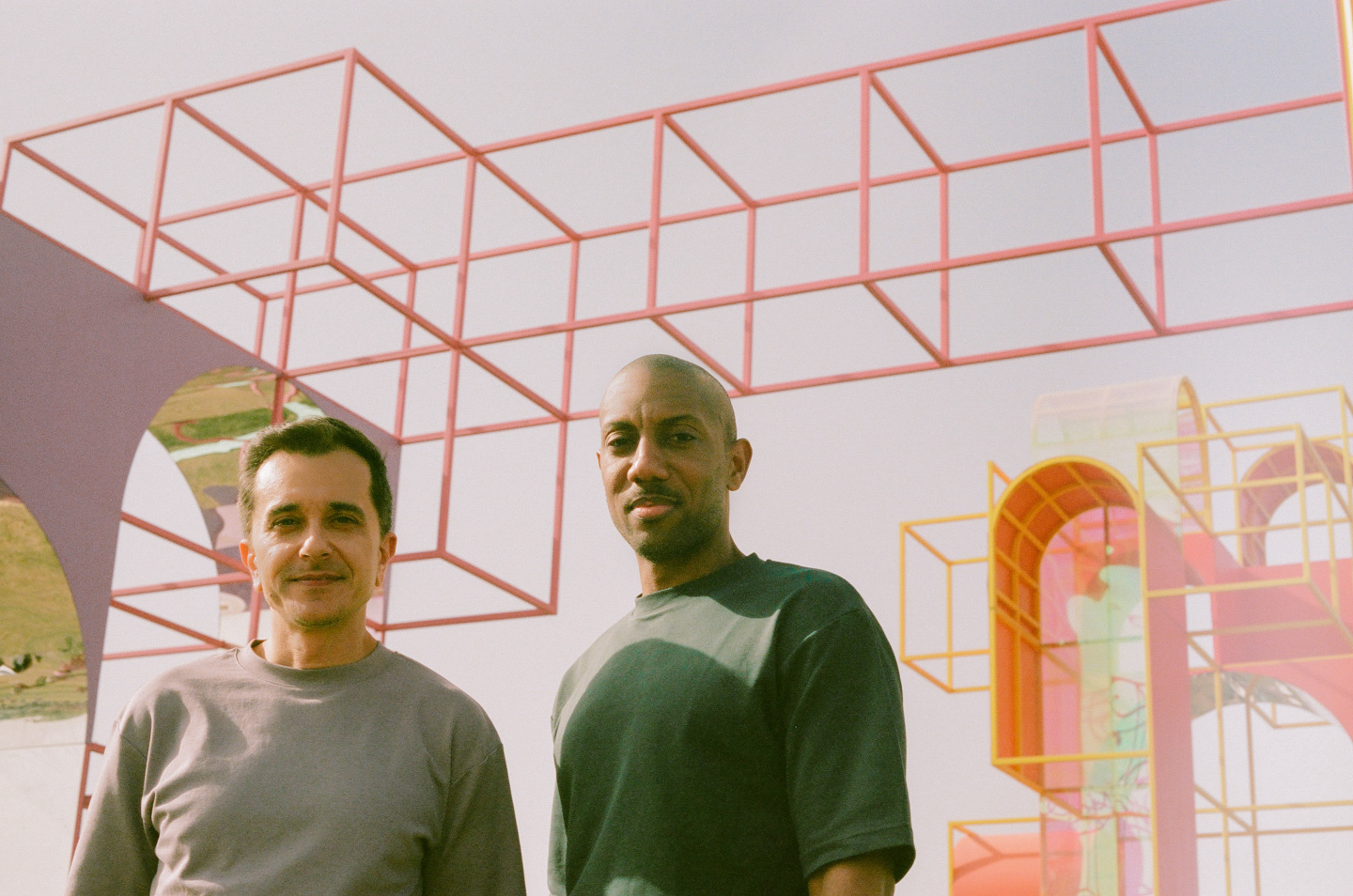

The Playground by Architensions
Cultured Young Architects alumnus Architensions is a design and research office led by Alessandro Orsini and Nick Roseboro. Several years in the making, the duo’s “playground” installation creates a unique sense of place and discovery within the festival grounds, bringing together a childhood playfulness with an adult-like, geometric playground of four steel-framed towers, ranging in height from 42 to 56 feet, that use modular scaffolds to suspend volumes of various shapes and materiality. The playground sports magenta and yellow grid structure while its piazza is in cyan. Orsini and Roseboro were inspired by Constant Neiuwenhuys’s “New Babylon,” a city of improvisation, chances and play as a critical alternative to the burdens imposed by production.


Buoyed by Kiki Van Eijk
Amidst the sea of people at the festival during weekend one were three, four-story-tall and angled buoys floating in the grass. Kiki Van Eijk, an Eindhoven, The Netherlands-based designer, wanted to create a surreal and happy space for everybody. Each buoy includes cultural references that emphasize the beauty of diversity and inclusivity, and they create a fantastical space to meet and interact with the people around you. At night, LED lights enhance the sculptures’ silhouettes, while the daytime offers a softer and calmer experience. The buoys are designed as a Dutch-style windmill, an igloo and a larger, palm tree-crowned pavilion with a seating area inside.

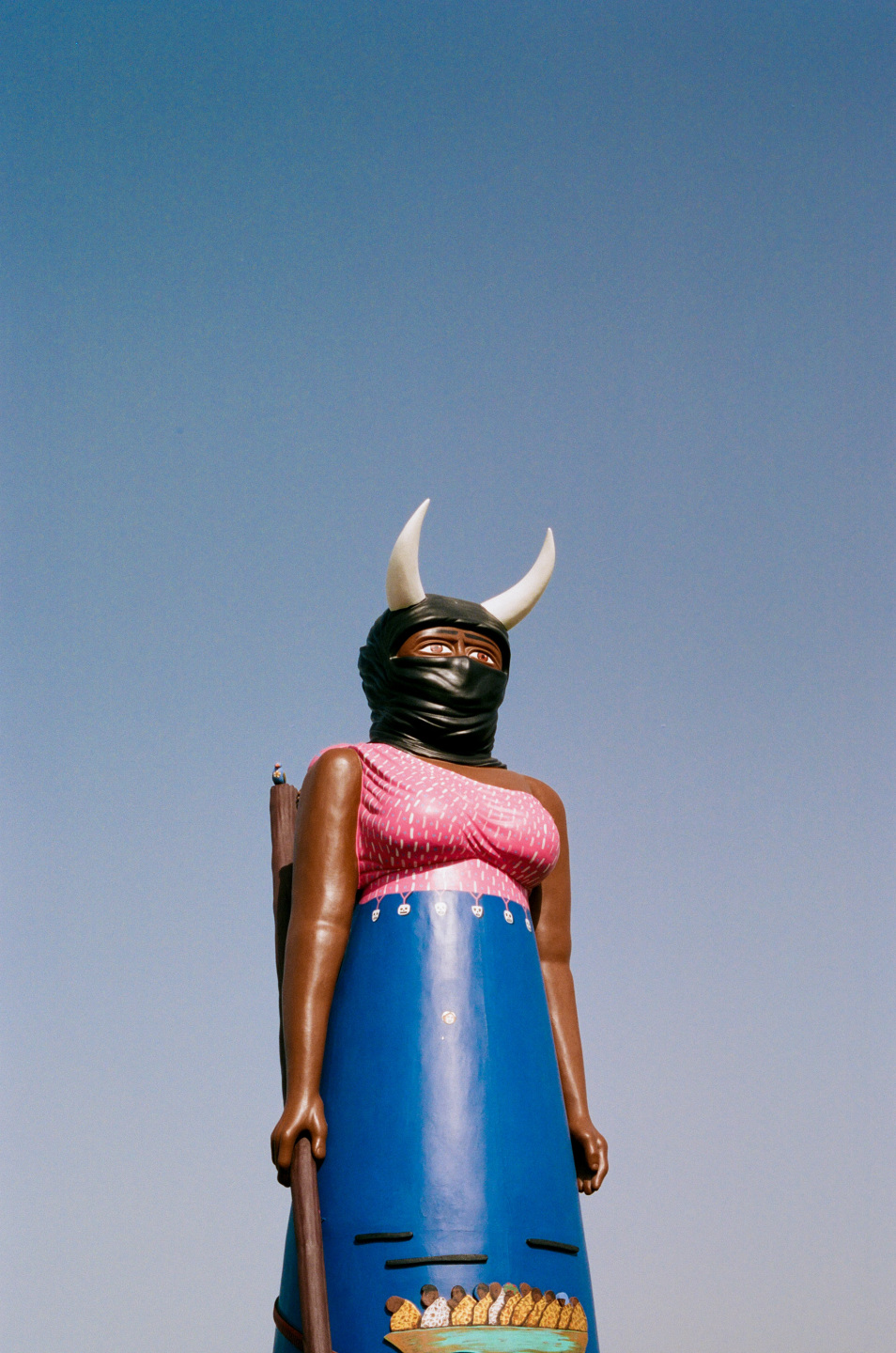

La Guardiana by LosDos
La Guardiana is warrior sculpture that towers over the festival grounds wearing an enredo (skirt), a rebozo (shawl) to carry her child, a mask to conceal her identity and horns to represent strength. She is meant to be the guardian of the immigrants from Mexico, Central America and around the globe. The iconography on her enredo includes people walking and traveling by train and boat toward the border wall—to offer an understanding of the reasons why people make the treacherous journey to foreign lands. The figure was created by LosDos, the El Paso, Texas-based artists Ramon and Christian Cardenas. The husband-and-wife duo is known for creating murals, screenprints, street poster installations and large-scale inflatable sculpture, drawing inspiration from everyday life in El Paso and Juarez, Mexico.
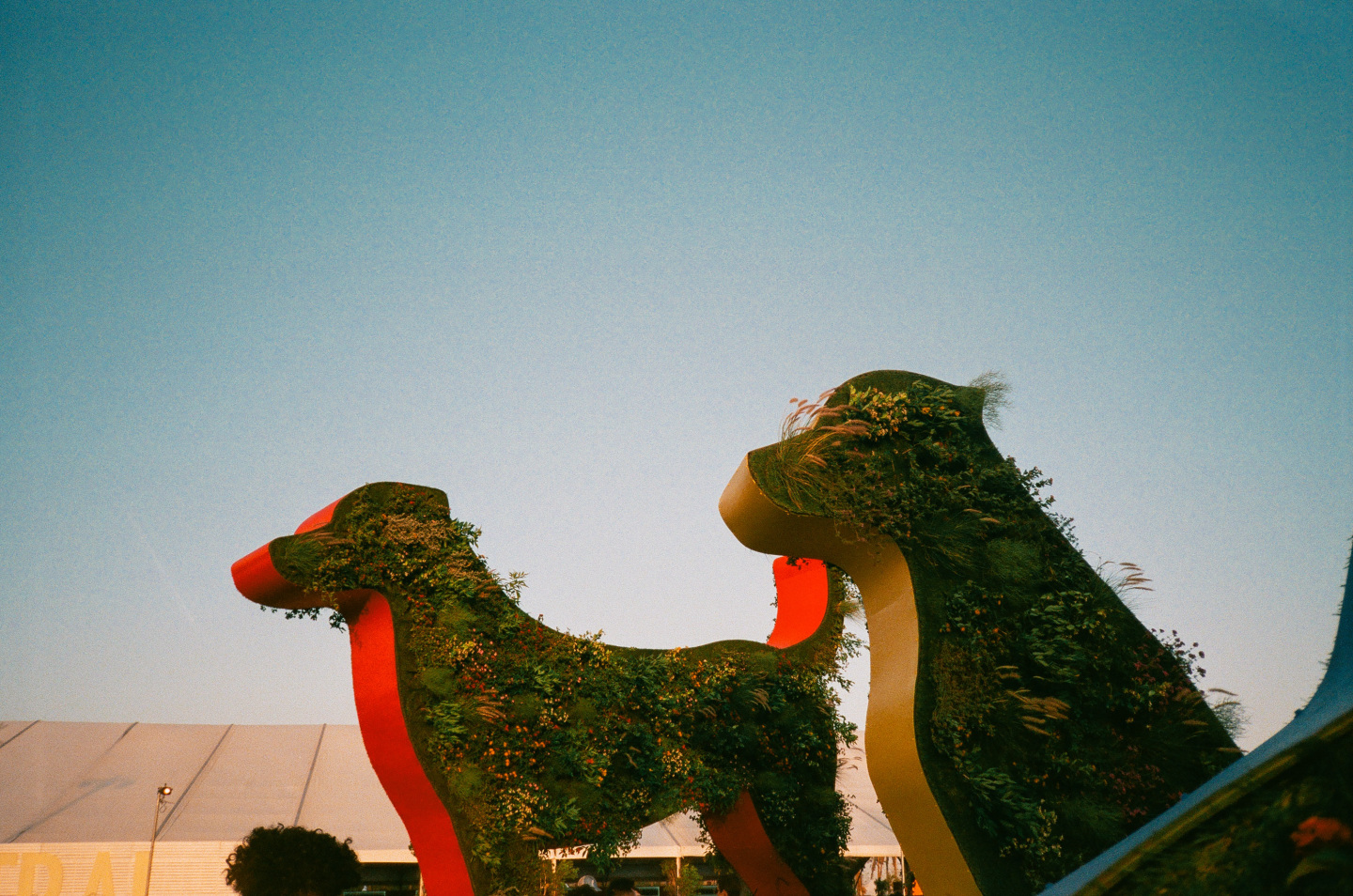


Mutts by Oana Stănescu
Artist Oana Stănescu believes we can learn a lot from dogs, and many pet lovers would tend to agree. The offer us joy, lust for life, loyalty, unconditional affection and an endless capacity for love. The New York–based Romanian architect created massive canine sculptures to bring a bit of this love to the desert. Each steel sculpture is covered in live plants, which bring a sense of home and comfort to a lawn filled with thousands of strangers. Plants like lantana (red, yellow, purple), cassia, fountain grass, yellow bell, jasmine make up their shaggy forms and add depth to the sculptures while creating a shaded place for gathering.


Cocoon (BKF + H300) by Martín Huberman
The Buenos Aires, Argentina–based architect and designer Martín Huberman created a nine-story sculpture constructed with 300 reproductions of the iconic B.K.F., otherwise known worldwide as the butterfly chair. In 1940, three architects—Antonio Bonet, Juan Kurchan and Jorge Ferrari Hardoy—designed the original in Buenos Aires; it was quickly added to the Musem of Modern Art's permanent collection a year later. The chair has since been adopted by pop culture, reproduced and knocked off for midcentury modern-style projects. With this sculpture, Huberman has reclaimed its design narrative, using B.K.F. reproductions to create a structural irony of the mythological origin of a chair that was born out of a cocoon.


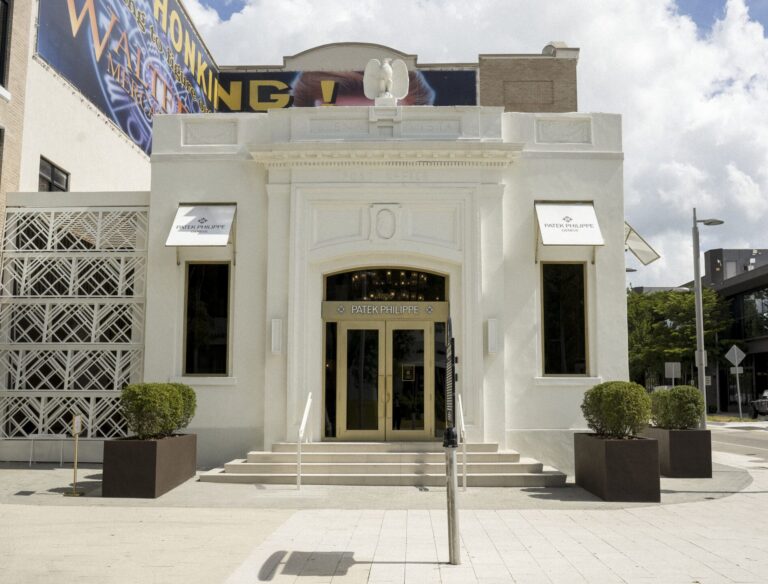


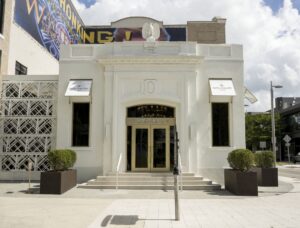




 in your life?
in your life?

